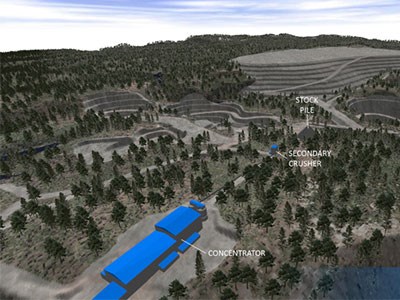Yesterday’s tabling of Federal Minister of Finance Chrystia Freeland’s Fall Economic Statement outlines a strategic plan that will provide support for the country’s mining sector to commit to the federal government’s plan to become a net-zero emission country by 2035.
The federal government will be providing a tax credit for clean technologies of up to 30 per cent for companies investing in clean net-zero technologies, battery storage solutions, electric industrial vehicles and small modular reactors.
Thunder Bay-Superior North MP Patty Hajdu told SNNewswatch affiliate CFNO, “as the world transition to clean energy, Canada is leading the way. We can actually do that in a better way if we make sure we invest in the kinds of innovations and companies that are growing and actually taking over a global market for clean technology and green energy. This is the time and we want to make sure we are in the game and that we let no opportunity go by.”
However, Unifor National President Lana Payne feels that the Fall Economic Statement looks promising but falls short in areas such as employment insurance reform.
"There are several encouraging items in the statement, including the basic labour protections required for new clean tech and clean hydrogen tax credits and the promise of consultation for additional investments in advanced manufacturing in the 2023 budget," said Unifor National President Lana Payne. "However, more must be done to further strengthen these labour protections and to introduce solutions to permanently fix Employment Insurance."
Unifor suggests that EI reform is a pressing matter considering that inflation rates have skyrocketed in the last several months leading Canadian’s face an impending economic slowdown.
Although Payne acknowledges the benefits of implementing two types of tax credits, one for companies adopting clean energy and the other an elimination of interest on student loans, the level of labour protection these tax credits will have is unknown.
"We look forward to consulting on this to ensure local economic development when the government makes important investments," said Payne.
The Mining Association of Canada, on the other hand, finds that the tax credits are beneficial for advancing critical mineral operations, something the Northern mine has an abundance.
"This investment tax credit will serve to benefit Canada's mining industry in several ways as the deployment of zero-emission vehicles and non-GHG emission solutions are accelerating across our sector," said Pierre Gratton, MAC's President and CEO. "The urgency of addressing climate change and the need for materials to support technological evolution is a priority for our industry and this tax credit will support our sector in accomplishing its climate action priorities."
The Fall Economic Statement will invest in the Impact Assessment Agency of Canada, which will improve the mining permitting process. This will allow the ability to provide the mined products, including critical minerals, that will meet both domestic demand and global demand.
However, Gratton wants to see more support for the Impact Assessment Agency of Canada by hiring more knowledgeable subject-matter experts, rather than staff to create “more efficient project reviews in the time frame required to fight climate change and address geopolitical realities,”
“Canada has had tremendous success attracting new investment into the battery value chain on the promise of a reliable supply of battery materials, and now we have to deliver,” said Gratton.
Furthermore, the Ontario government’s Minister of Finance, Peter Bethlenfalvy, is worried that the Fall Economic Statement doesn’t fit with Premier Ford’s “Get it Done” official stance on industry projects.
“Although we welcome funding to support speedier federal reviews, the real opportunity is in eliminating redundant federal review processes in support of Ontario’s robust environmental assessment process. As we continue our work building the road to the Ring of Fire and unleashing the economic potential of critical minerals, the federal government should make a real commitment to be a full partner by working with us to make Ontario and Canada more competitive by streamlining cumbersome review processes. We also expect the federal government, at minimum, to match Ontario’s investments to support critical infrastructure in seizing this opportunity,” said Bethlenfalvy.
Bethlenfalvy also addresses another shortcoming in the Fall Economic Statement which is the lack of investments in increasing the number of foreign skilled workers to fill the demand in Ontario and other provinces.
“Ontario urges the federal government to continue working with its provincial partners to enact and expand programs that help fill labour gaps through immigration,” said Bethlenfalvy.
